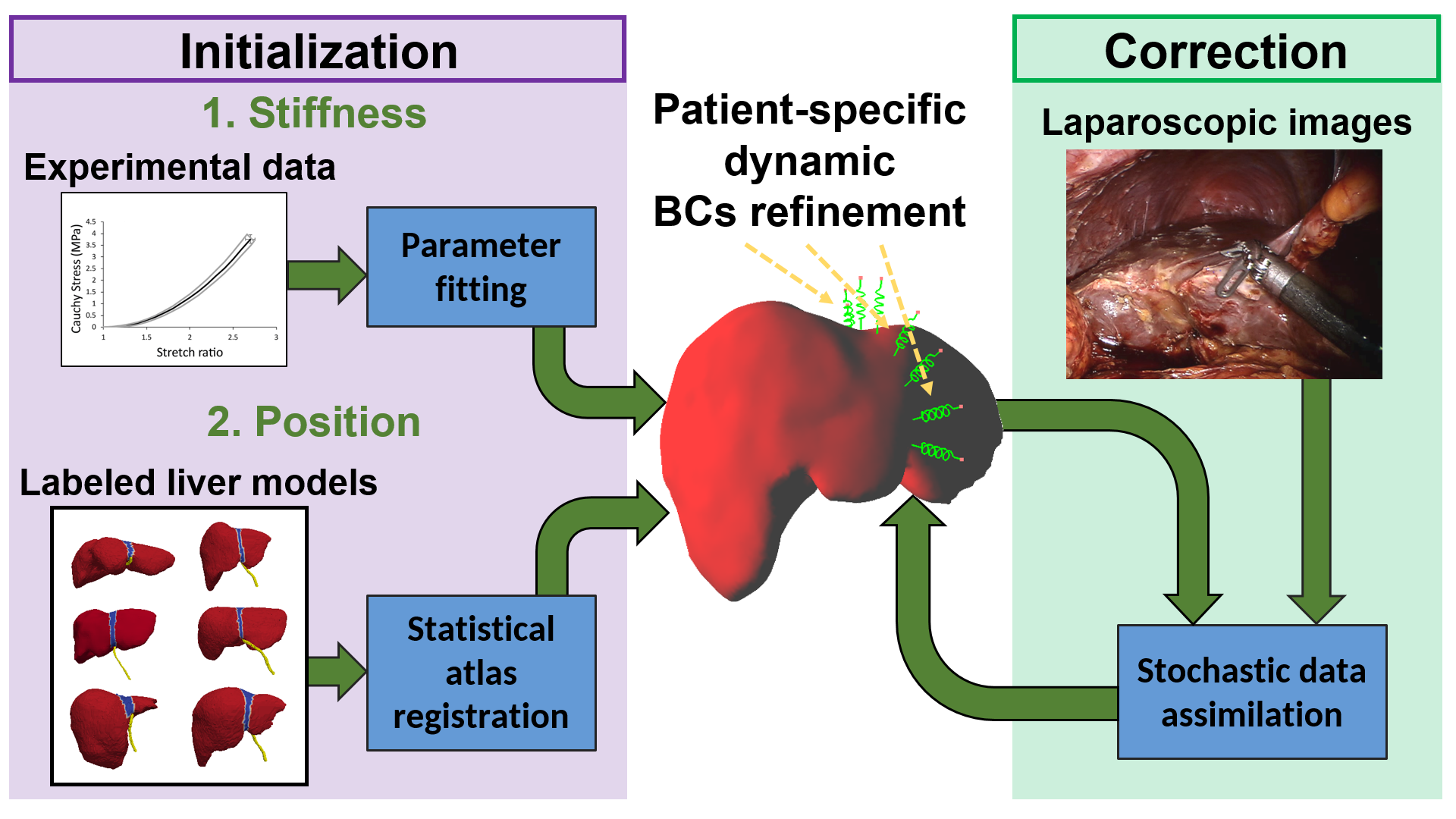Section: New Results
Estimation of boundary conditions for patient-specific liver simulation during augmented surgery
Participants : Sergei Nikolaev, Stéphane Cotin.
Augmented liver surgery is an active research area that aims at improving the surgical outcome by enhancing the view of internal structures. However, to precisely estimate the position of these, an accurate model of the liver is required. While researchers have focused on proposing new models, algorithms for real-time computation or estimation of the tissue properties, very few have addressed the question of boundary conditions. Yet, they play a key role in the computation of the deformation. Boundary conditions mainly result from ligaments connecting the liver to its surrounding anatomy and limiting its motion. Unfortunately, ligaments' shapes and properties cannot be identified with preoperative imaging. We propose to estimate both the location and stiffness of ligaments by using a combination of a statistical atlas, numerical simulation, and Bayesian inference (fig. 6). Ligaments are modeled as polynomial springs connected to a liver finite element model. Their original location on the liver is based on an anatomical atlas, and their initial stiffness is taken from the literature. These characteristics are then corrected using a reduced order unscented Kalman filter based on observations taken from the laparoscopic image stream. Our approach is evaluated using synthetic data and phantom data. Results show that our estimation of the boundary conditions improves the accuracy of the simulation by 75% when compared to typical methods involving Dirichlet boundary conditions. The results were submitted for a presentation at IPCAI 2020



